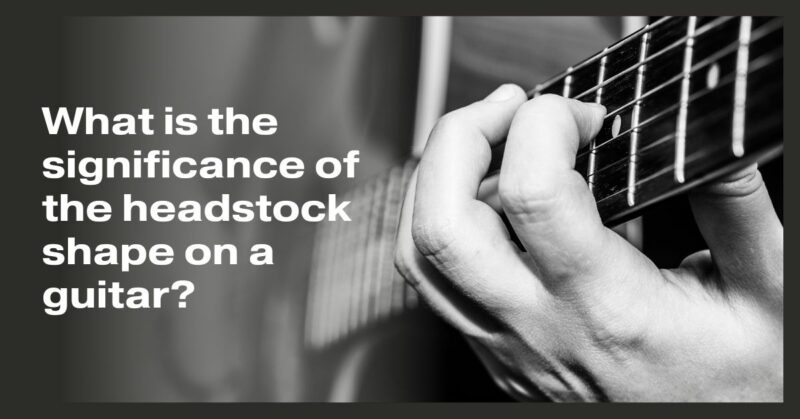The guitar, often celebrated as a work of art, is the result of meticulous craftsmanship that goes beyond its tonewoods and pickups. One often-overlooked yet highly significant aspect of a guitar’s design is the headstock shape. The headstock, located at the end of the guitar neck, is more than just an aesthetic feature; it plays a vital role in the instrument’s functionality, resonance, and identity. In this article, we will explore the significance of the headstock shape on a guitar and how it contributes to the overall playing experience.
1. Tuning Stability: Precision at the Top
The primary function of the headstock is to house the tuning pegs or machine heads. The shape and angle of the headstock can impact tuning stability significantly:
- Angle of String Pull: The angle at which the strings leave the nut and travel towards the tuning pegs is influenced by the headstock design. A straighter string pull from the nut to the pegs can contribute to better tuning stability, as it reduces the likelihood of string slippage.
- Weight Distribution: The shape and weight of the headstock can affect the balance of the guitar. A well-balanced headstock minimizes the tendency for the neck to dive when playing, which can enhance playability and comfort.
- String Winding: Some headstock designs allow for more or less string winding on the tuning pegs. More winding can result in better grip and stability for the strings.
2. Resonance and Tone: The Hidden Harmonics
Believe it or not, the headstock shape can influence the guitar’s tonal characteristics:
- Mass Distribution: The weight and mass of the headstock can impact the way vibrations travel through the neck and body. A well-designed headstock shape can distribute mass in a way that enhances sustain and resonance.
- Tonal Colors: Some players believe that the shape of the headstock can subtly influence the tonal colors of the guitar. While this effect may be minimal, it’s an intriguing aspect for those who seek unique tonal qualities.
3. Brand Identity and Aesthetics: Making a Statement
The headstock shape also plays a significant role in establishing brand identity and aesthetics:
- Visual Identity: Iconic guitar manufacturers often feature distinct headstock shapes that are instantly recognizable. Think of the Fender Stratocaster’s headstock, Gibson’s famous open-book design, or the angular headstock of a PRS guitar.
- Customization: Custom guitar builders and players sometimes opt for unique headstock shapes to make a statement or personalize their instrument.
4. Player Comfort: A Matter of Feel
Headstock shape can influence how comfortable the guitar is to play:
- Angled Back Headstocks: Some guitars feature headstocks that are angled back. This design can affect the string tension, potentially making the guitar more comfortable to play, especially for those who prefer lower string tension.
- Weight and Balance: The shape and weight of the headstock can influence how the guitar hangs when strapped on, affecting the overall comfort of playing during long sessions.
Conclusion: The Headstock’s Silent Influence
While the headstock shape may not be the first thing that comes to mind when considering a guitar’s qualities, it plays a subtle yet significant role in the instrument’s functionality, tonal characteristics, and visual identity. Whether it’s enhancing tuning stability, influencing resonance, making a brand statement, or contributing to player comfort, the headstock’s significance extends far beyond its position at the end of the neck. It is a crucial element in the symphony of design and craftsmanship that defines the world of guitars.


